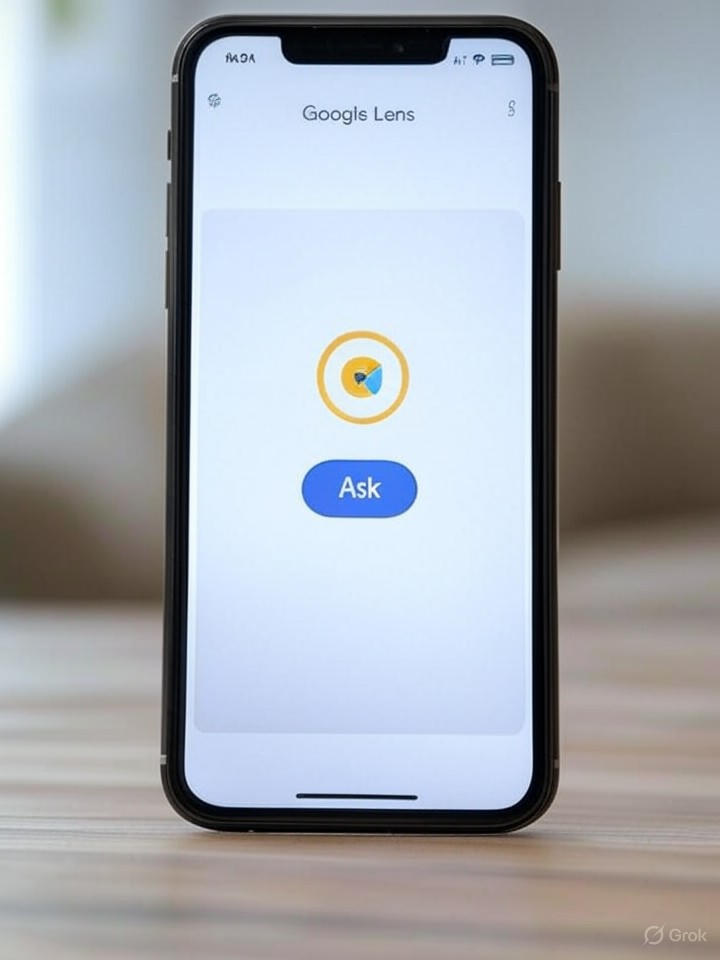Google’s Push for Seamless Visual Search
In a subtle yet significant update, Google has elevated the voice search functionality within its Lens app, making it far more accessible to users. What was once a tucked-away feature is now prominently displayed with a new “Ask” button, signaling the tech giant’s commitment to integrating voice commands into visual search experiences. This move, detailed in a recent report by Android Authority, underscores Google’s strategy to blend artificial intelligence with everyday user interactions, potentially reshaping how people query the world around them through their smartphones.
The “Ask” button appears directly in the Google Lens interface, encouraging users to speak their questions while capturing images or videos. This isn’t just a cosmetic change; it represents Google’s broader effort to make multimodal search—combining voice, image, and video—second nature. Industry observers note that this prominence could drive higher adoption rates, as users previously might have overlooked the voice option hidden in menus.
From Hidden Gem to Front-and-Center Tool
Voice search in Google Lens has evolved rapidly over the past year. As reported by PhoneArena, an update in August 2024 began rolling out features that simplified adding context to searches via voice, allowing users to narrate queries while scanning objects. This built on earlier enhancements, such as video search capabilities announced in October 2024, where users could record short clips and ask questions aloud, as covered by Times of India.
These developments position Google Lens as a powerful tool for real-time information retrieval. For instance, a user spotting an unfamiliar plant can now snap a photo, hit the “Ask” button, and verbally inquire about its species or care instructions, receiving AI-generated responses almost instantly. This integration leverages Google’s Gemini AI models, enhancing accuracy and relevance in responses.
Implications for User Engagement and AI Integration
For industry insiders, this update highlights Google’s aggressive push in the AI-driven search arena, where competitors like Apple and Microsoft are also vying for dominance in visual and voice technologies. By making voice search “impossible to miss,” as Android Authority puts it, Google aims to increase user stickiness within its ecosystem. Data from internal metrics, though not publicly detailed, suggest that Lens queries have been among the fastest-growing search types, according to insights shared in a 9to5Google analysis from October 2024.
Moreover, this feature could have ripple effects in sectors like e-commerce and education. Shoppers might use it to compare products on the fly by voicing specifics like “find similar shoes in blue,” while students could analyze historical artifacts with contextual questions. The seamless blend of voice and visuals reduces friction in search processes, potentially boosting overall engagement with Google’s services.
Challenges and Future Directions in Multimodal Search
However, challenges remain. Privacy concerns arise with voice data collection, especially when paired with camera inputs, prompting Google to emphasize opt-in features and data controls. Additionally, accuracy in diverse accents and noisy environments is an ongoing refinement area, as noted in a Neowin report on the October 2024 updates.
Looking ahead, insiders speculate that Google might expand this to more integrated experiences, such as augmented reality overlays or deeper ties with Wear OS devices. The “Ask” button could evolve into a gateway for more advanced AI interactions, like real-time translation during video calls. As Gizmochina highlighted in its coverage, the ability to search with video and voice marks a pivotal shift toward more intuitive, human-like computing interfaces.
Competitive Pressures and Strategic Positioning
In the broader tech ecosystem, this update positions Google advantageously against rivals. Apple’s Visual Look Up in iOS, while capable, lacks the same voice integration depth, and Microsoft’s Bing Visual Search is still catching up in mobile ubiquity. Google’s move, building on announcements like those in a Google Blog post from October 2024, reinforces its lead in AI-enhanced search tools.
Ultimately, by foregrounding voice in Lens, Google is not just enhancing a feature but fostering a new paradigm where search becomes conversational and contextual. This could accelerate the adoption of AI in daily life, influencing everything from consumer behavior to enterprise applications, as the company continues to iterate on its vision for intelligent, accessible technology.




 WebProNews is an iEntry Publication
WebProNews is an iEntry Publication